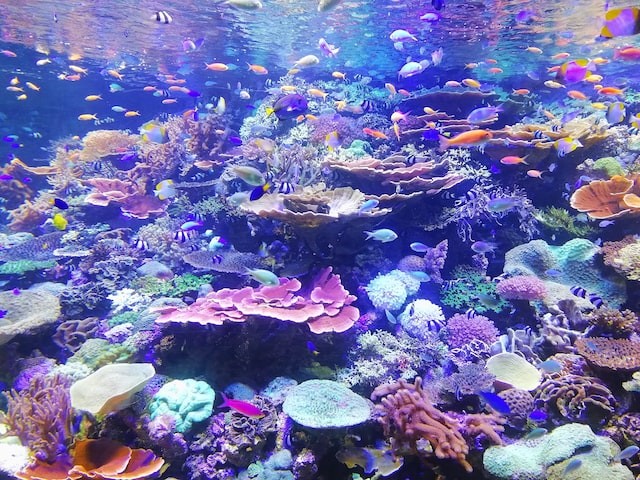The popular Florida pompano fish has only been successfully raised and distributed commercially by less than 10 aquaculture facilities in the United States.
A recent study has found the ideal salinity needed to raise fingerlings (young fish) from hatch through weaning in farm-like settings
Florida pompano fish raised in low-salinity environments
 (Photo : SGR/Unsplash)
(Photo : SGR/Unsplash)

However, no low-salinity experiments have been carried out on Florida pompano larvae.
Several studies have looked at using juvenile Florida pompano in low salinity (early stages of a fish), as per ScienceDaily.
Researchers from Florida Atlantic University's Harbor Branch Oceanographic Institute, in association with two nearby fish farms, Live Advantage Baits and Preaguatix performed a novel experiment to fill knowledge gaps regarding the effect of low salinity on Florida pompano larval health.
The study's goal was to establish the ideal salinity needed for on-farm fingerling (young fish) culture from hatch to weaning.
Low salinity circumstances can have an impact on the Florida pompano's early development by raising osmoregulatory stress, which lowers the amount of metabolic energy reserves that would normally be required for developmental activities like cellular formation.
This experiment served as a model study with the aim of on-farm collaborations and helped to forge a connection between scientists and farmers in the aquaculture industry.
The lipid profile of the larvae is a crucial factor in assessing the Florida pompano's health and viability as a species for commercial consumption. Individual fatty acids, such as docosahexaenoic acid (DHA), eicosapentaenoic acid (EPA), and arachidonic acid, are what makeup lipids (ARA).
Linoleic acid (LA), alpha-linoleic acid (LNA), and 18:3 n-6 were found to be crucial as potential energy fuels and precursors for the biosynthesis of long-chain polyunsaturated fatty acids (LC-PUFA) in the early stages of development, which was validated by the complete transcriptomics investigation.
Also Read: Dark Side of Fish Pedicure: Fishes Starved for Days for This Unethical Beauty Practice
Philippines trying culturing Pompano fish
It's understandable why some refer to pompano as the most palatable fish in the world.
It is a tasty fish that doesn't require seasoning or scaling, has few bones, fits neatly on a pan, and has a mellow, sweet flavor that goes well with practically any recipe, as per SEADEC/AQD.
But pompano has yet to gain traction in the Philippines, despite its well-established culinary and aquaculture importance elsewhere.
The main causes of this are an illness from sea lice and a scarcity of pompano fingerlings to stock into cages and ponds.
Nevertheless, a global research institute with its headquarters in Tigbauan, Iloilo, Philippines is determined to make the pompano the next big thing in Philippine aquaculture.
Dan Baliao, chief of SEAFDEC/AQD, noted that from January to August, pompano was collected ten times from brackishwater ponds and marine cages, yielding a total of 14 tons of the very valuable item.
For the sake of enhancing its research and commercialization efforts, the research center is also building a pompano hatchery at its Tigbauan headquarters.
The new plant may potentially service independent farmers and has an 80-ton raising capacity.
The development of a low-cost diet, methods to hasten growth in the nursery stage, lowering sea lice infestations, and stopping the spread of the nervous necrosis virus which affects pompano breeders and larvae are all areas where SEAFDEC/AQD has conducted research and continues to do so, according to Baliao.
Related article: Fisherman Catches 16-Foot Oarfish Long Thought to be a Mythical Fish, Residents Fear of Impending Earthquake
© 2024 NatureWorldNews.com All rights reserved. Do not reproduce without permission.

![Tsunami Hazard Zones: New US Map Shows Places at Risk of Flooding and Tsunamis Amid Rising Sea Levels [NOAA]](https://1471793142.rsc.cdn77.org/data/thumbs/full/70325/280/157/50/40/tsunami-hazard-zones-new-us-map-shows-places-at-risk-of-flooding-and-tsunamis-amid-rising-sea-levels-noaa.jpg)



